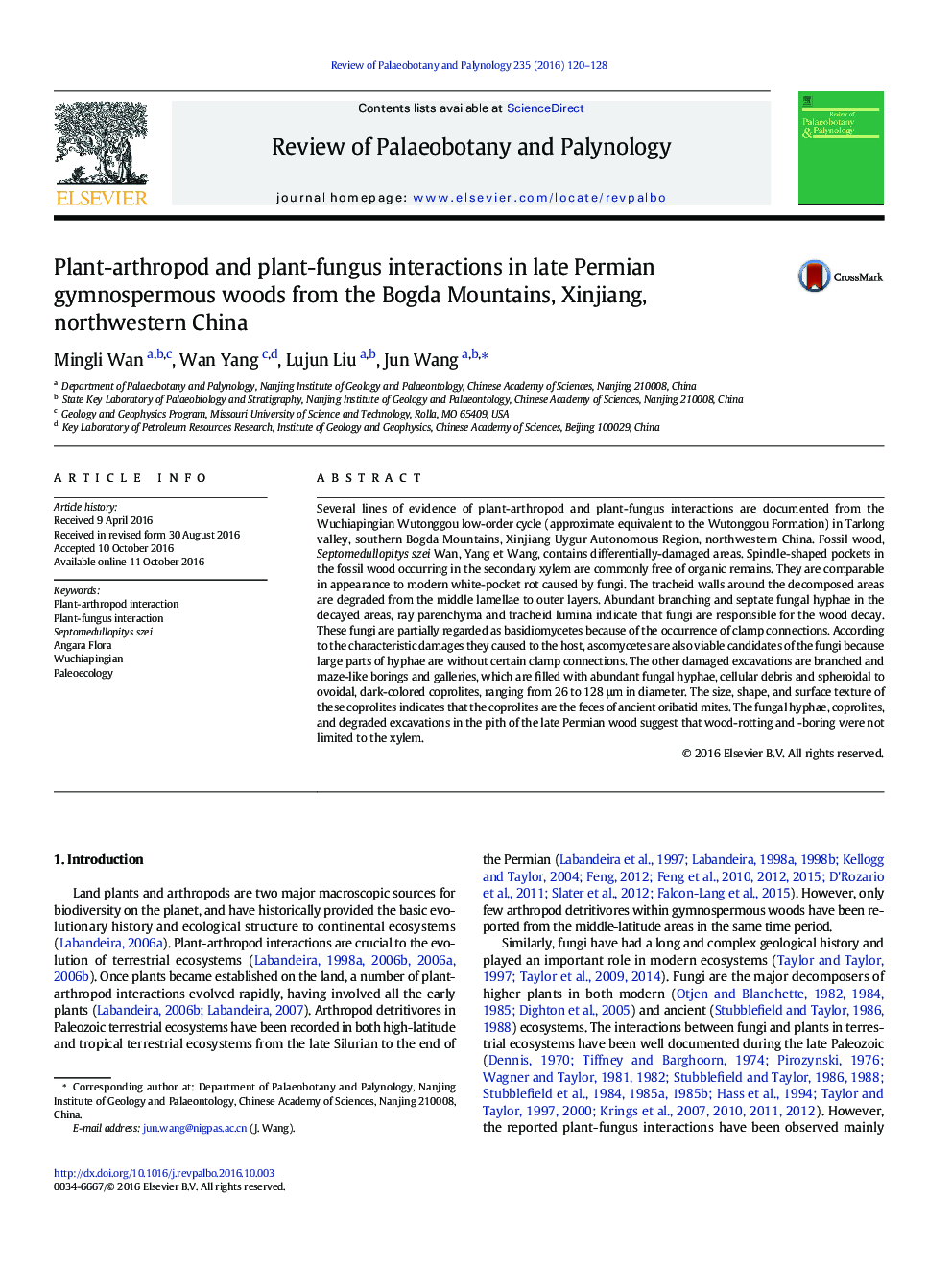| کد مقاله | کد نشریه | سال انتشار | مقاله انگلیسی | نسخه تمام متن |
|---|---|---|---|---|
| 6448614 | 1642462 | 2016 | 9 صفحه PDF | دانلود رایگان |
عنوان انگلیسی مقاله ISI
Plant-arthropod and plant-fungus interactions in late Permian gymnospermous woods from the Bogda Mountains, Xinjiang, northwestern China
ترجمه فارسی عنوان
تعامل گیاهان بابونه و گیاه قارچ در اواخر قرن بیستم، از کوههای بوگدای، سین کیانگ، شمال غربی چین
دانلود مقاله + سفارش ترجمه
دانلود مقاله ISI انگلیسی
رایگان برای ایرانیان
کلمات کلیدی
موضوعات مرتبط
مهندسی و علوم پایه
علوم زمین و سیارات
فسیل شناسی
چکیده انگلیسی
Several lines of evidence of plant-arthropod and plant-fungus interactions are documented from the Wuchiapingian Wutonggou low-order cycle (approximate equivalent to the Wutonggou Formation) in Tarlong valley, southern Bogda Mountains, Xinjiang Uygur Autonomous Region, northwestern China. Fossil wood, Septomedullopitys szei Wan, Yang et Wang, contains differentially-damaged areas. Spindle-shaped pockets in the fossil wood occurring in the secondary xylem are commonly free of organic remains. They are comparable in appearance to modern white-pocket rot caused by fungi. The tracheid walls around the decomposed areas are degraded from the middle lamellae to outer layers. Abundant branching and septate fungal hyphae in the decayed areas, ray parenchyma and tracheid lumina indicate that fungi are responsible for the wood decay. These fungi are partially regarded as basidiomycetes because of the occurrence of clamp connections. According to the characteristic damages they caused to the host, ascomycetes are also viable candidates of the fungi because large parts of hyphae are without certain clamp connections. The other damaged excavations are branched and maze-like borings and galleries, which are filled with abundant fungal hyphae, cellular debris and spheroidal to ovoidal, dark-colored coprolites, ranging from 26 to 128 μm in diameter. The size, shape, and surface texture of these coprolites indicates that the coprolites are the feces of ancient oribatid mites. The fungal hyphae, coprolites, and degraded excavations in the pith of the late Permian wood suggest that wood-rotting and -boring were not limited to the xylem.
ناشر
Database: Elsevier - ScienceDirect (ساینس دایرکت)
Journal: Review of Palaeobotany and Palynology - Volume 235, December 2016, Pages 120-128
Journal: Review of Palaeobotany and Palynology - Volume 235, December 2016, Pages 120-128
نویسندگان
Mingli Wan, Wan Yang, Lujun Liu, Jun Wang,
